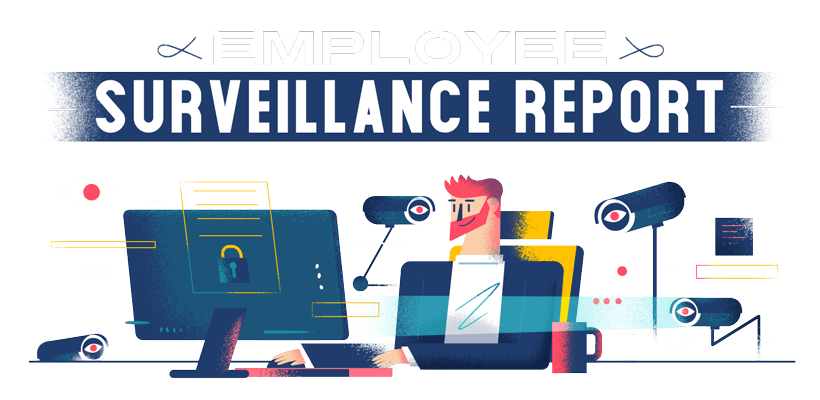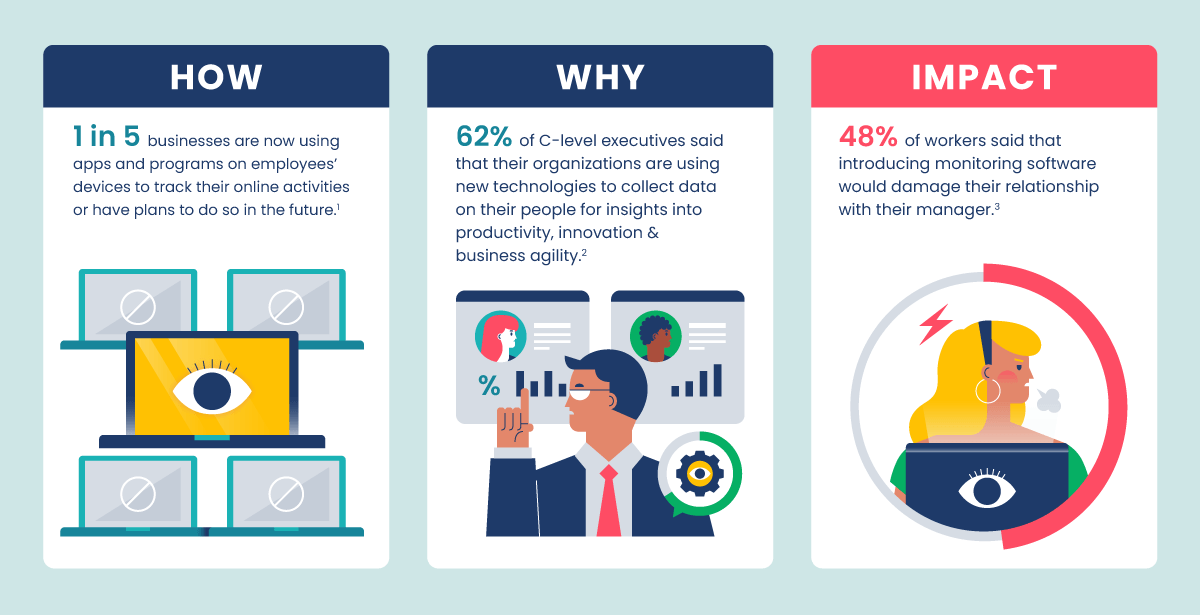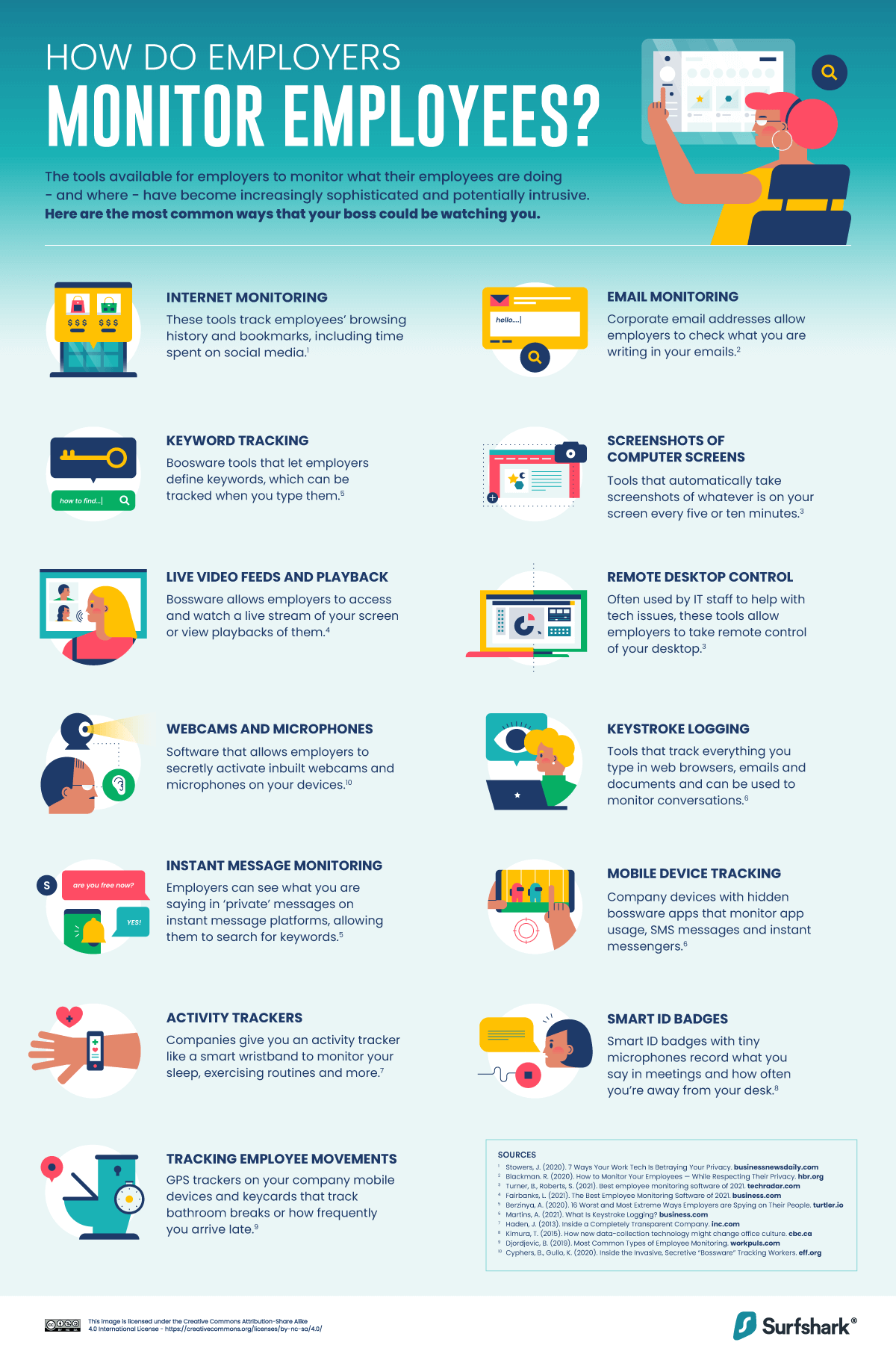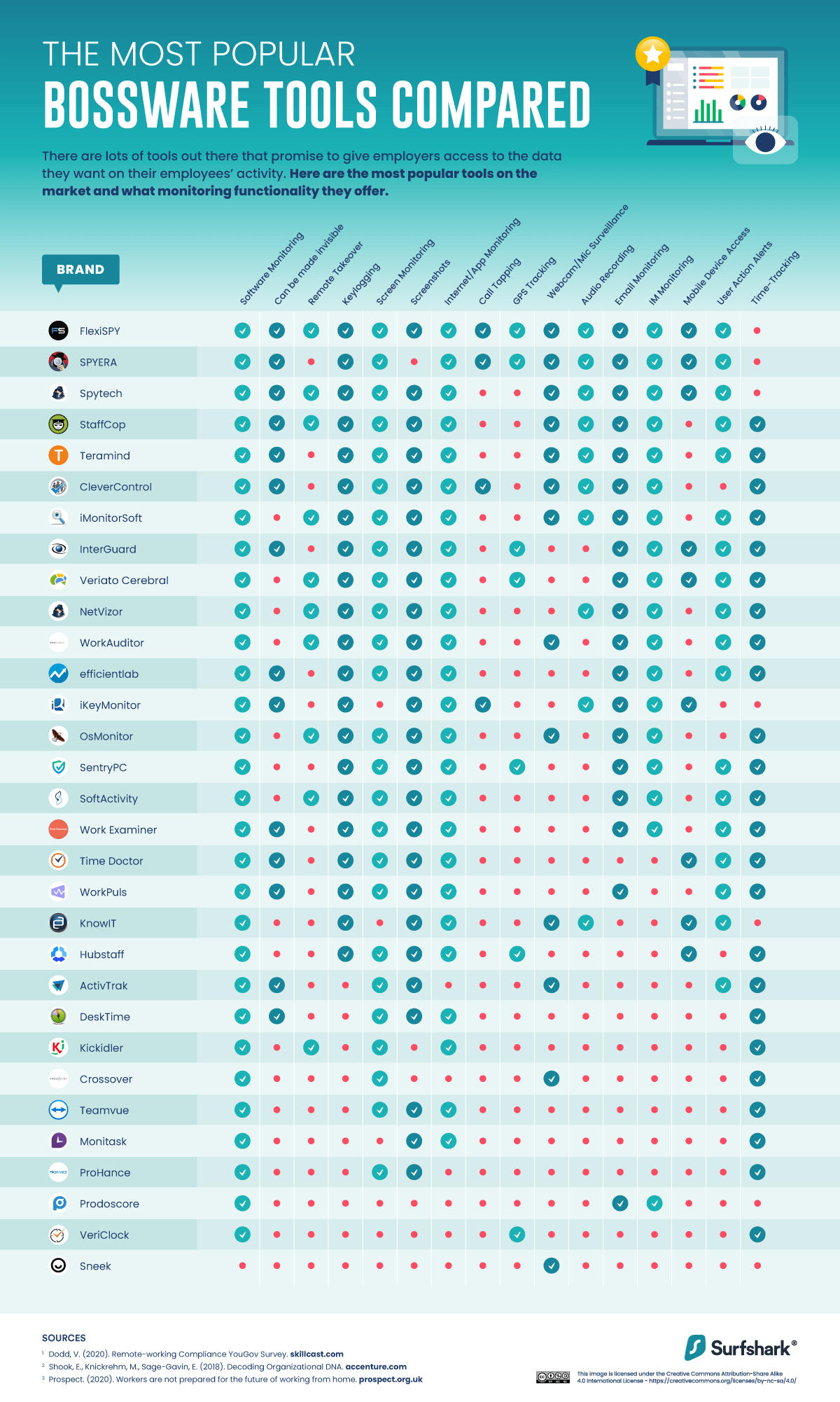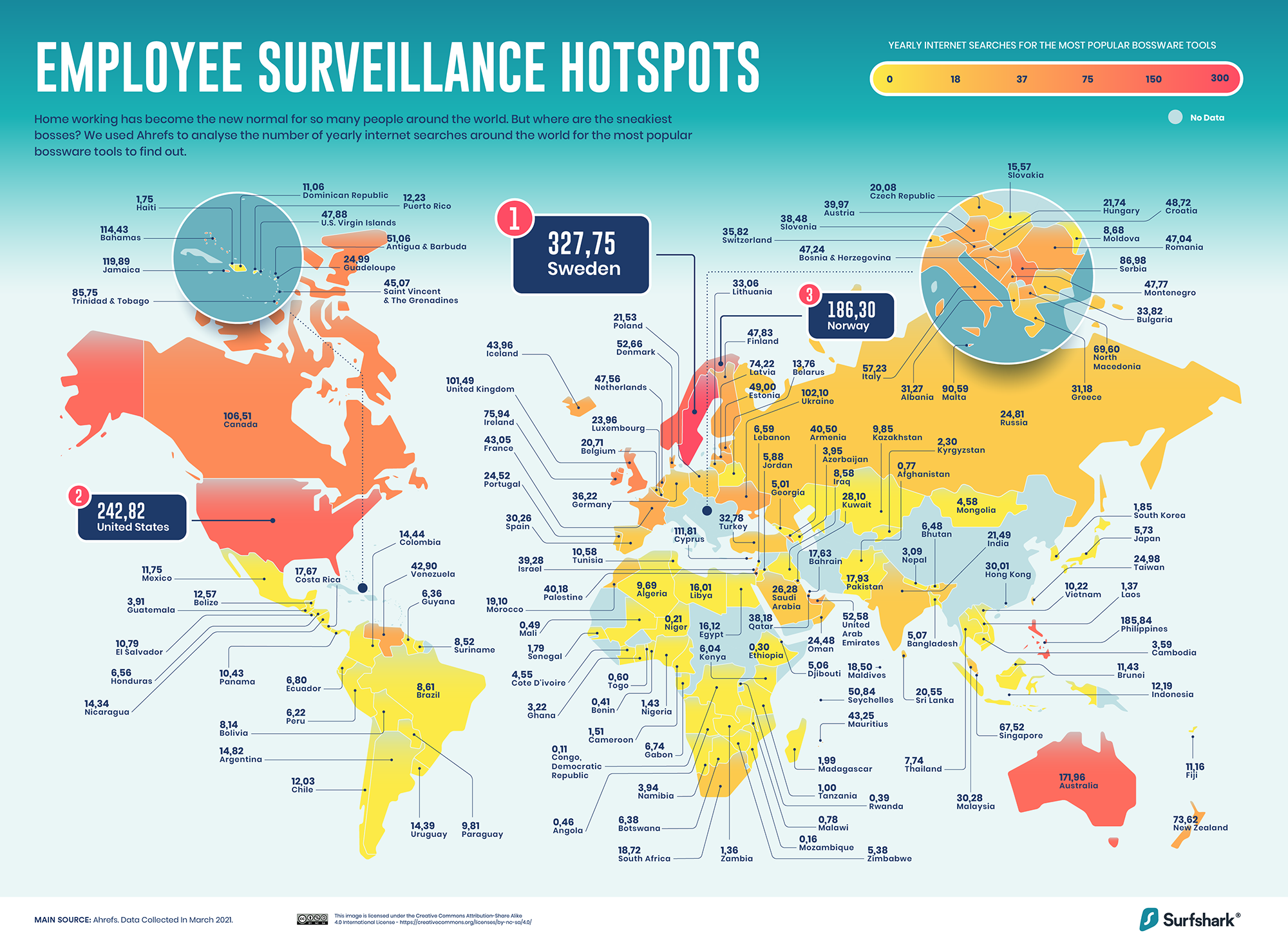1. Arora, G. (2017).Can Google Workspace Admin Read My Email. goldyarora.com
2. Berzinya, A. (2020).16 Worst and Most Extreme Ways Employers are Spying on Their
People. turtler.io
3. Blackman. R. (2020).How to Monitor Your Employees — While Respecting Their Privacy.
hbr.org
4. Clark, B. (2018).Here’s how to find out if your employer can spy on your Slack
conversations. thenextweb.com
5. Cyphers, B., Gullo, K. (2020).Inside the Invasive, Secretive “Bossware” Tracking Workers.
eff.org
6. Department of Justice. (2021).Electronic Communications Privacy Act of 1986 (ECPA).
bja.ojp.gov
7. Digi Helpdesk. (2020).Microsoft Teams inactivity timeout: How to reset your status and
more. digihelpdesk.co.uk
8. Dinita, M. (2021).Can Microsoft Teams Be Used to Spy on You. technipages.com
9. Djordjevic, B. (2019).Most Common Types of Employee Monitoring. workpuls.com
10. Dodd, V. (2020).Remote-working Compliance YouGov Survey. skillcast.com
11. Dooks, K., Kirk, E. (2013).Ownership and use of social media by employees in the UK.
thomsonreuters.com
12. Dwyer, K. (2020).Is My Workplace Watching Me. marieclaire.com
13. ECHR. (2013).European Convention on Human Rights. echr.coe.int
14. Ella, V.J. (2016).Employee Monitoring And Workplace Privacy Law. americanbar.org
15. Employment Law Online. (2021).Is it legal for my company to install a monitoring service on my
computer. employmentlawonline.au
16. European Union Agency for Fundamental Rights. (2021).Article 8 - Protection of personal data. europa.eu
17. EUR-Lex. (2021).Document 32016R0679. eur-lex.europa.eu
18. Fairbanks, L. (2021).The Best Employee Monitoring Software of 2021. business.com
19. Falque-Pierrotin, I. (2017).Opinion 2/2017 on data processing at work. europa.eu
20. Federal Register of Legislation. (2021).Telecommunications (Interception and Access) Act 1979.
legislation.gov.au
21. FindLaw. (2019).4th Amendment Search and Seizure Protections. findlaw.com
22. GOV.UK. (2021).Data protection and your business. gov.uk
23. Gray, K. (2021).The bossware boom is upon us: a look inside the employee monitoring
software market. businessofbusiness.com
24. Griffin, A. (2016).How To Stop Your Boss Spying On You, As European Court Rules Bosses
Can Read Messages. independent.co.uk
25. Haden, J. (2013).Inside a Completely Transparent Company. inc.com
26. Hill, K. (2012).How To Tell If Your Boss Is Spying On You. forbes.com
27. Information Commissioner’s Office. (2021).In the picture: A data protection code of practice for surveillance
cameras and personal information. ico.org.uk
28. Kimura, T. (2015).How new data-collection technology might change office culture.
cbc.ca
29. Klosowski, T. (2021).How Your Boss Can Use Your Remote-Work Tools to Spy on You.
nytimes.com
30. Legislation.gov.uk. (2021).Data Protection Act 2018. legislation.gov.uk
31. Legislation.gov.uk. (2021).The
Telecommunications (Lawful Business Practice) (Interception of Communications)
Regulations 2000. legislation.gov.uk
32. Martins, A. (2021).What Is Keystroke Logging. business.com
33. Morse, J. (2019).7 Slack privacy settings you should enable now. mashable.com
34. Office of the Australian Information Commissioner. (2021).Workplace monitoring and surveillance. oaic.gov.au
35. Office of the Australian Information Commissioner. (2021).Privacy in your state. oaic.gov.au
36. Prospect. (2020).Workers are not prepared for the future of working from home.
prospect.org.uk
37. Reputation Refinery. (2016).Your
private Slack conversations, might not be private at all. reputationrefinery.com
38. Sevilla, G. (2020).The Best Employee Monitoring Software for 2021. pcmag.com
39. Shein, E. (2020).How your actions on Zoom could get you fired. techrepublic.com
40. Shelton, M. (2019).Newsrooms, let’s talk about Google Workspace. freedom.press
41. Shook, E., Knickrehm, M., Sage-Gavin, E. (2018).Decoding Organizational DNA. accenture.com
42. Spencer, A. (2021).Can your private messages at work be read by your employer.
dba.org.uk
43. Stowers, J. (2020).7 Ways Your Work Tech Is Betraying Your Privacy.
businessnewsdaily.com
44. Suemo, J. (2020).12 most asked questions on UK employee monitoring laws.
worktime.com
45. Turner, B., Robarts, S. (2021).Best employee monitoring software of 2021. techradar.com
46. Victorian Legislation. (2021).Surveillance Devices Act 1999. legislation.vic.gov.au
